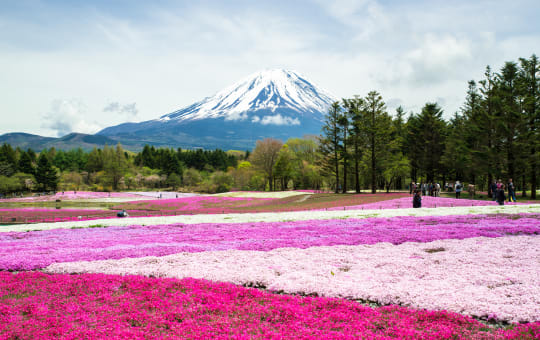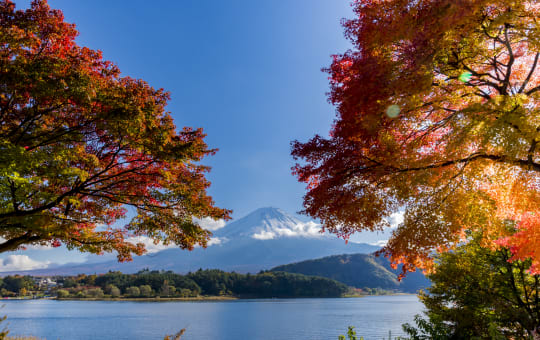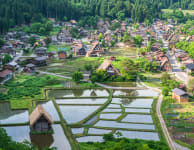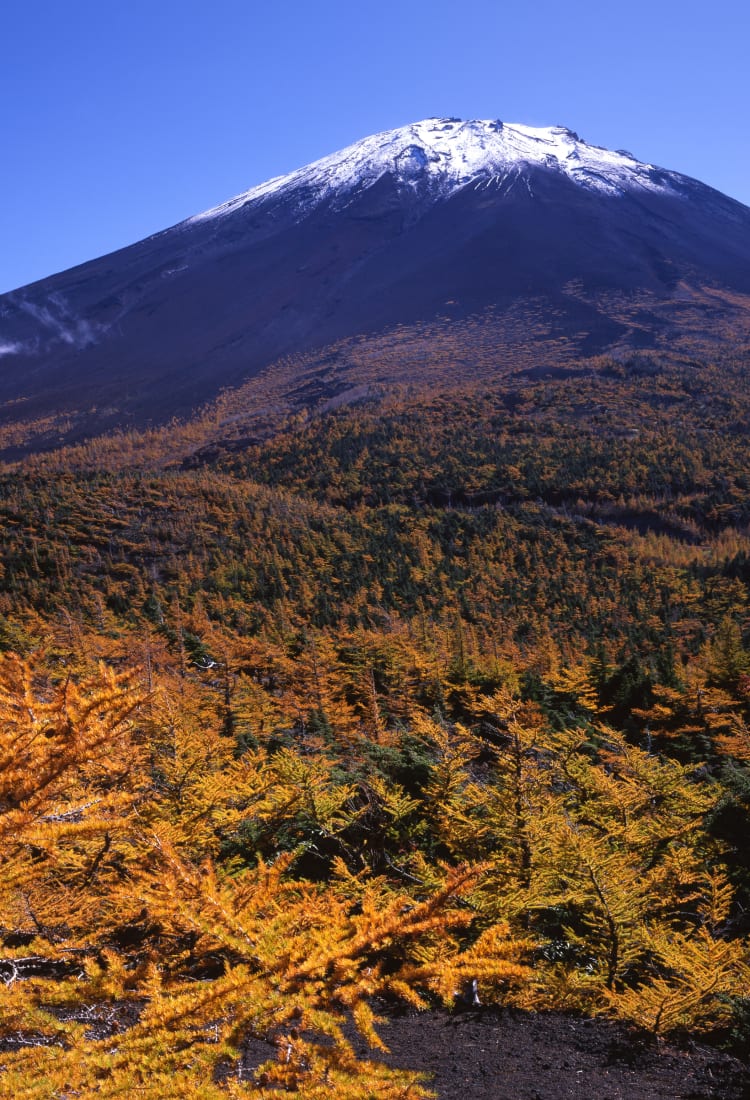

YAMANASHI Mt. Fuji (Yamanashi) Experience the ancient pilgrimage to the summit of Mt. Fuji
Experience the ancient pilgrimage to the summit of Mt. Fuji
During the Edo period (1603-1867), followers of the Fuijiko faith would embark on a pilgrimage from Edo (modern-day Tokyo) to the top of Mt. Fuji on foot. The trail is still very popular today.
Don't Miss
- Stay overnight on Mt. Fuji and then climb to the top to see the sunrise
- Reserve proper trekking gear from La Mont, which has a shop in Kawaguchiko, to be delivered to you at the Yoshida Trail 5th Stations
- During the climbing season at night, look at the northeast side of Mt. Fuji and you will see thousands of climbers' lights twinkling like a glow worm
How to Get There
Mt. Fuji is located in southeastern Yamanashi near the border of Shizuoka , accessible by JR train or bus from Shinjuku Station.
Take an express train on the JR Chuo Line, and change at Otsuki Station for the privately-run Fuji Kyuko Line (JR Rail Pass not accepted). Alternatively, you can take a bus to Kawaguchiko Station from Shin-Fuji Station (2 hours and 15 minutes) or Mishima Station (1.5 hours), which are both on the JR Tokaido Shinkansen Line.
Mt. Fuji Station (Fujisan Station) is the closest station to the Yoshida Trail . Once you arrive at either Mt. Fuji Station (Fujisan Station) or Kawaguchiko Station, you can get a bus to Mt. Fuji 5th Station. You can also get to Mt. Fuji 5th Station via bus from Shinjuku Expressway Bus Terminal in just under 2.5 hours. The bus journey to Kawaguchiko Station takes almost 2 hours.
Kitaguchi Hongu Fuji Sengen-jinja Shrine
The historic entrance to Mt. Fuji, located at Kitaguchi Hongu Fuji Sengen-jinja Shrine , is a must see for those who plan to climb the sacred volcano. Proceed slowly along the approach to the shrine in order to study the moss-covered stone lanterns lining your way. The enormous gate (Fujisan Ootorii) marks your departure from this world and your arrival in the world of the sacred.
Thousand-year-old trees surrounding the shrine
Pay particular attention to the massive Japanese cedars that surround the shrine. These thousand-year-old trees stand as a testament to the ancient practice of venerating Mt. Fuji. Taro is the name of the tree at the front of the shrine, while Jiro, his twin, can be seen at the back.
The Yoshida Trail
Although it is still possible to walk directly from the back of Kitaguchi Hongu Fuji Sengen-jinja Shrine to the top of Mt. Fuji, the path between the shrine and Umagaeshi, the entrance to the Yoshida Trail , has been lost to time. It is still possible to start the ascent of Mt. Fuji from the shrine, but a GPS feature on your smartphone will be indispensable to ensure you stay on course.
Bus to Umagaeshi during climbing season
Once you arrive at the entrance to Umagaeshi, you will be greeted by a pair of stone monkeys guarding the gate. Enter here to climb to Mt. Fuji 5th Station in virtual undisturbed silence. For the less intrepid climber, there is a bus that departs Mt. Fuji Station (Fujisan Station) for Umagaeshi during the climbing season (July and August).
Experienced climbers ascending Mt. Fuji outside the official climbing season (July 1 to September 10) do so at their own risk
Mt. Fuji's 5th Station
As your peaceful ascent to Mt. Fuji's 5th station draws to a close, savor the last moments just before you encounter the dozens of expressway buses that have arrived via the Fuji Subaru Line . Now you can resupply for the most challenging part of the climb. Remember that you will be ascending beyond the tree line, so it's going to get much cooler, especially at night. You will be able to access many services at the 5th station, so be sure to have a look around before you continue your ascent of Mt. Fuji.
Make sure you're prepared
Take this opportunity to send a postcard or ask any final questions of the tourist information staff. Be sure to have warm clothing, rain gear, and a good pair of hiking boots as Mt. Fuji can become a very inhospitable place in a sudden downpour.
The Yoshida Fire Festival
Each year, on the night of August 26, the Chinka Taisai is held to prevent Mt. Fuji from erupting. This 400-year-old festival is also known as the mountain's closing festival. At the festival , three-meter-high bonfires are lit along the national road leading to the base of Mt. Fuji. These fires are an offering to Mt. Fuji, the God of Fire. This festival is one of Japan's greatest.
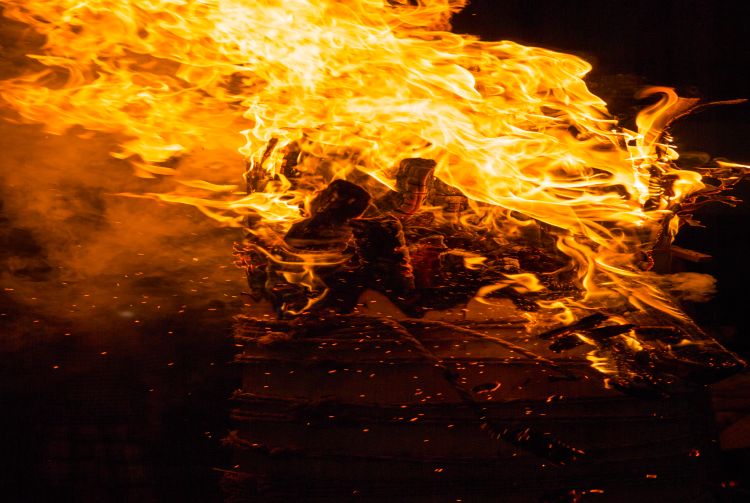
Fujisan World Heritage Center
The exhibits tell the story of how Mt. Fuji became both a sacred place of worship and an artistic inspiration to the Japanese people. Pay particular attention to the the small dioramas that depict the ascent of Mt. Fuji in ancient times. The center offers multilingual audio guidance in English, Chinese, Korean, Thai and Indonesian. You can also get tourist information about Mt. Fuji and the surrounding area.
* The information on this page may be subject to change due to COVID-19.




























































